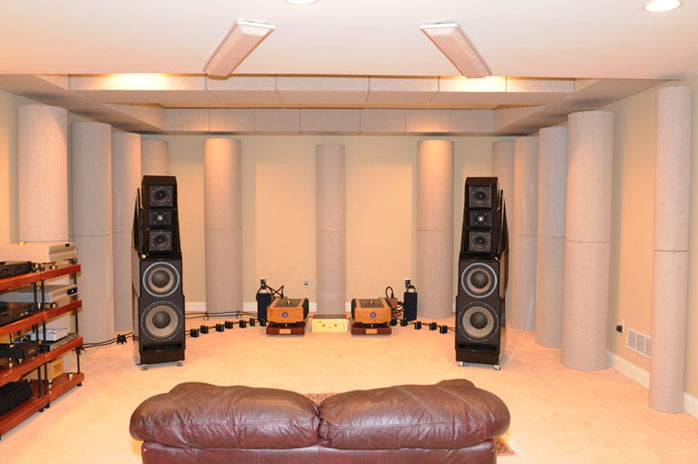It’s the time of year for saving money!
In the last installment of this continuing series about getting the most for your Hi-Fi dollar, I mentioned the Chinese Classic, “The Art of War”, in which Sun Tzu wrote about “fighting without fighting”, as a way to win wars. Buying or improving your Hi-Fi system is hardly the same as going to war, but there are, I wrote, certain similarities, and I offered you some thoughts on “shopping without shopping” as a way to save money and still get great sound.
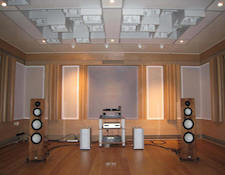 In Parts 6 and 7, I wrote about your listening room as an active component of your system, and suggested that, instead of just being “the room you listen in”, you should make it a “dedicated” Listening Room, with the primary purpose of providing good sound for serious listening. I also gave you some hints about how to position your system and furniture for maximum performance (Symmetry is the key, with the original sound from both of your speakers arriving at your listening position at the same time, followed by the reflected sounds from your room also arriving at the same time for both stereo channels) and said that your listening room is one of the parts of your system that can benefit most from “shopping without shopping” and provide you with great sonic benefits for, in many cases, very little money.
In Parts 6 and 7, I wrote about your listening room as an active component of your system, and suggested that, instead of just being “the room you listen in”, you should make it a “dedicated” Listening Room, with the primary purpose of providing good sound for serious listening. I also gave you some hints about how to position your system and furniture for maximum performance (Symmetry is the key, with the original sound from both of your speakers arriving at your listening position at the same time, followed by the reflected sounds from your room also arriving at the same time for both stereo channels) and said that your listening room is one of the parts of your system that can benefit most from “shopping without shopping” and provide you with great sonic benefits for, in many cases, very little money.
To optimize your room, the first thing you should do, after your room has been properly selected and oriented, and your system and furniture has been set-up for likely best performance, is, as I wrote in Part 7, to put on a recording with significant bass energy and LISTEN. Given the speakers you’re using, does your bass go down as deep as it ought to? Is it rich and full? Do kick drums “kick”? Do pipe organs rumble? If not, you may have problems caused by bass interaction with room boundaries or by “standing waves” in your room creating augmentations or cancellations at particular frequencies.
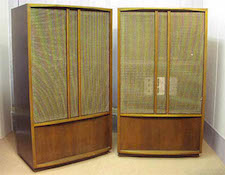
Speakers placed next to a wall sound more bass-y, and they get even bassier when they’re placed in a corner. (That was one of the reasons for “corner horn” speakers like the Klipschorn and the Electro-Voice Patrician) If you’re using one or more separate sub-woofers, you may be able to use this to your benefit; placing them for more, less, or better bass as it suits you. With full-range speakers, though, that might not be possible: For one thing, getting the speakers placed properly for the best bass response could interfere with their ability to image well and present a believable soundstage. If that’s the case, or if, when the speakers are placed for best imaging, the bass they produce loses its “kick” or becomes “thin” or “boomy”, bass traps – simple room treatments, cheaply and easily purchased or even made DIY — placed in the corners or at other points in your room could stop or lessen the pressure wave phenomena that are causing your problem, and might be your best bet for better sound. Check the internet for these; you’ll find a wealth of information about buying or making them and how to use them once you have them in hand.
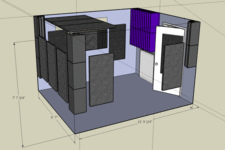 Other kinds of room treatments are available, too, to solve almost any kind of room problem, DIY, or at almost any price point you might desire. The thing to remember in planning the treatments for your room is that – unless you go the full anechoic chamber route which tends to be hideously expensive and sounds AWFUL, any treatment you use will apply to only a limited range of frequencies. Another thing to remember is that, regardless of manufacturers’ claims, there are really only three basic kinds of acoustical treatment: “Absorbers”, which soak up acoustical energy to adjust your room’s effective frequency response and reverberation time, to make it sound “deader”. “Reflectors”, which, instead of sucking-up unwanted acoustical energy, bounce it on –mirror or pool ball style (angle of incidence equals angle of reflection) — to either bounce again or to be absorbed at some other place in your room. The third kind, “Diffusers” combine elements of both of the others, to break-up (higher frequency) acoustical energy into multiple reflections at the same frequency but of lower energy, to produce a sound that — because the ratio of direct to reflected sound it produces may be greater at certain frequencies – can be “clearer”, with more accurate tonality and better imaging and soundstaging.
Other kinds of room treatments are available, too, to solve almost any kind of room problem, DIY, or at almost any price point you might desire. The thing to remember in planning the treatments for your room is that – unless you go the full anechoic chamber route which tends to be hideously expensive and sounds AWFUL, any treatment you use will apply to only a limited range of frequencies. Another thing to remember is that, regardless of manufacturers’ claims, there are really only three basic kinds of acoustical treatment: “Absorbers”, which soak up acoustical energy to adjust your room’s effective frequency response and reverberation time, to make it sound “deader”. “Reflectors”, which, instead of sucking-up unwanted acoustical energy, bounce it on –mirror or pool ball style (angle of incidence equals angle of reflection) — to either bounce again or to be absorbed at some other place in your room. The third kind, “Diffusers” combine elements of both of the others, to break-up (higher frequency) acoustical energy into multiple reflections at the same frequency but of lower energy, to produce a sound that — because the ratio of direct to reflected sound it produces may be greater at certain frequencies – can be “clearer”, with more accurate tonality and better imaging and soundstaging.
Knowing about these three kinds of acoustical treatment, and that they’re really all there are, (everything else other than Helmholtz resonators, which can vibrate along with the music to either cancel or add to certain bass frequencies, or active equalization or DSP — which can change seemingly every aspect of the sound — seems just to be a variation on one of these three) means that you are freed from the need to buy special, factory-made treatments for your room, and can, accordingly, save a bucket of money while you “tweak” your sound:
]]>Is your room too “bright” or too “lively, simple, just use something absorptive to “dampen ” it. And what should that be? In my listening room, I use 7′-almost-floor-to-ceiling draperies (triple the desired width on a single curtain rod = about 30′ of flat panels for about 10 ‘ of wall coverage) on the wall behind the speakers. Suitable panels are available from Amazon and other internet sources for cheap, and you can change the amount of sound they absorb by just using more or fewer panels to cover your desired area. For the wall behind my listening position, I also improvised, using a low-cost (about US$50) 5′ X 8′ solid color area rug stapled to the wall with its 8′ dimension centered horizontally and its 5’ dimension centered vertically. It works great.
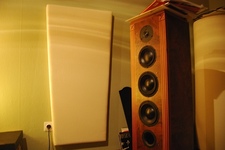 If you want to spend more money, another option is to do as we did in XLO’s Southern California factory sound room, where, to solve a special problem, we covered two walls floor-to-ceiling, with absorptive-one- side-and-reflective-the-other-side vertical venetian blinds. That plus commercial carpeting on one wall gave us the ability, just by adjusting the angles of the various vertical panels of the blinds, to broadly change the acoustical characteristics of the room at will, and we found the we could get near-perfect sound from a wide variety of speakers with significantly different characteristics.
If you want to spend more money, another option is to do as we did in XLO’s Southern California factory sound room, where, to solve a special problem, we covered two walls floor-to-ceiling, with absorptive-one- side-and-reflective-the-other-side vertical venetian blinds. That plus commercial carpeting on one wall gave us the ability, just by adjusting the angles of the various vertical panels of the blinds, to broadly change the acoustical characteristics of the room at will, and we found the we could get near-perfect sound from a wide variety of speakers with significantly different characteristics.
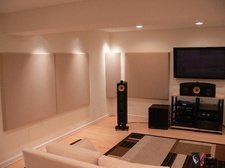 Another thing we did at XLO and that you can do at home is to use large (6′ tall or better) potted plants in the corners of the room to – with their hundreds of leaves all reflecting sound off in different directions – act as very effective diffusers that looked better, worked nearly as well for our purposes, and cost a LOT less money than some commercial units.
Another thing we did at XLO and that you can do at home is to use large (6′ tall or better) potted plants in the corners of the room to – with their hundreds of leaves all reflecting sound off in different directions – act as very effective diffusers that looked better, worked nearly as well for our purposes, and cost a LOT less money than some commercial units.
There are any number of other non-commercial, non-standard treatments that you can use to make your room (and thus your entire system) sound better: Statuary or relief sculptures can act to diffuse sound. More extreme wall hangings (like a full sheepskin or a fabric “sculpture” can be spot “absorbers”; and large open-mouth decorative ceramic pots set in the corners or other critical locations can, by acting as Helmholtz resonators, work with your walls or bass traps to tame certain bass frequencies.
You now know the basics. Go ye forth and improvise. It will not only save you money and get you great sound, but your improvised treatments can also LOOK a lot better than some of the commercial ones and thus make your listening room better in a whole new way!
See you next time to talk about something related, but different.
